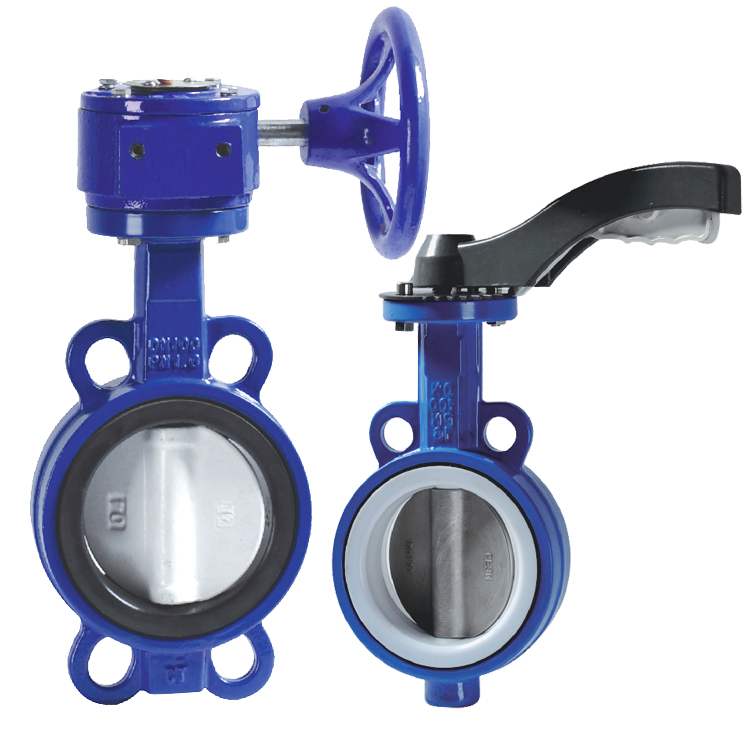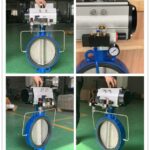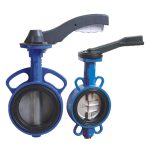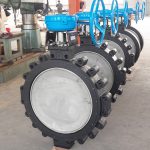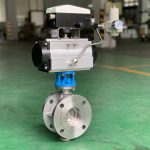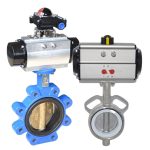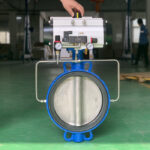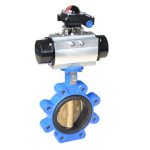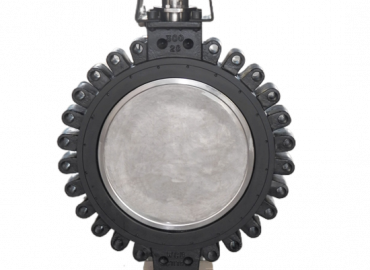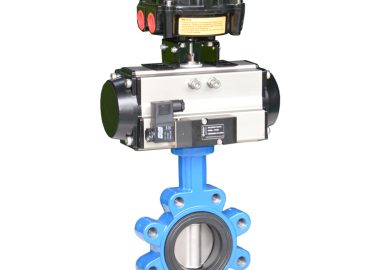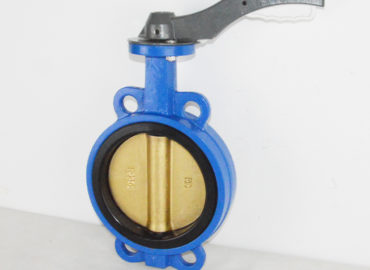In the vast world of industrial mechanics, wafer valve play an indispensable role. These compact, cost-effective devices are integral to controlling the flow of fluids in a multitude of systems, serving a wide array of industries from wastewater treatment to oil and gas. With their unique design and diverse applications, wafer valves have revolutionized fluid control mechanisms, bringing efficiency and adaptability to new heights. This blog post aims to delve into the intriguing world of wafer valves, exploring their design intricacies, and highlighting their myriad applications.
Introduction
In the realm of industrial mechanics, wafer valve are a critical component. These devices, though compact and cost-effective, play an essential role in controlling the flow of fluids within a wide variety of systems. Their application spans across numerous industries, including but not limited to wastewater treatment, oil and gas, and manufacturing. The design of wafer valves is one of their most intriguing aspects. They are typically sandwiched between two flanges using bolts or studs and nuts, thus earning the name ‘wafer’ due to their thin, wafer-like shape. This design allows them to be lightweight yet durable, making them ideal for several industrial applications. Not only do they regulate fluid flow efficiently, but their robust design also ensures longevity, reducing the need for frequent replacements. Furthermore, their versatility makes them adaptable to different systems, further solidifying their status as an industrial staple. As we delve deeper into this blog post, we will explore the intricate design elements of wafer valves, their various applications across industries, and how their use can enhance operational efficiency and cost-effectiveness in industrial processes.
Brief definition of Wafer Valve
Wafer valves, often referred to as wafer check valves, are a type of industrial valve known for their thin, disc-like shape that resembles a wafer. They are designed to control and regulate the flow of fluids within a system, preventing backflow and maintaining consistent fluid direction. The unique design of the wafer valve allows it to be sandwiched between two flanges in a piping system, secured by bolts or studs and nuts. This compact design not only saves space but also makes installation easier and more cost-effective. Despite their small size, wafer valves are incredibly durable and efficient, making them an essential component in a variety of industrial applications.
Importance and relevance in the industry
Wafer valve hold significant importance and relevance in various industries due to their unique design and functionality. Their compact and lightweight structure makes them an ideal choice for systems where space constraints are a concern. They are incredibly efficient in controlling fluid flow and preventing backflow, which is critical for the smooth operation of many industrial processes. Industries like oil and gas, wastewater treatment, manufacturing, and chemical processing heavily rely on these valves for their operations. Additionally, wafer valves are durable and require less maintenance compared to other valve types, making them a cost-effective solution for long-term use. Their adaptability to different systems and ease of installation further increase their relevance in the industry. In essence, wafer valves play a pivotal role in ensuring operational efficiency and safety in numerous industrial applications.
Understanding Wafer Valve
Understanding wafer valve begins with recognizing their distinctive design and structure. These valves, renowned for their thin, disc-like shape, are designed to regulate the flow of fluids within industrial systems. They are often sandwiched between two pipe flanges, secured in place with bolts or studs and nuts. This unique configuration allows them to effectively prevent backflow, a critical function in many industrial applications. The construction of wafer valves varies depending on their specific application, but most feature a spring-assisted disc that opens to allow fluid flow in one direction and closes to prevent backflow when the flow ceases. There are also different types of wafer valves, including swing check, dual plate, and single-disc wafer valves, each with their own advantages and suitable applications. Despite their compact size, these valves are incredibly robust, capable of withstanding high pressures and temperatures. Their lightweight design not only saves space but also reduces installation costs, making them a popular choice in industries such as oil and gas, manufacturing, and wastewater treatment. Furthermore, their durability means they require less maintenance than other valve types, contributing to their cost-effectiveness. Understanding the intricacies of wafer valves is key to appreciating their versatility and wide-ranging industrial applications.
Detailed explanation of the structure and design of Wafer Valve
Wafer valve are characterized by their thin, disc-like structure, which is where they derive their name. This design is pivotal in their function of controlling fluid flow within industrial systems. The essential parts of a wafer valve include the valve body, the disc, and the spring. The valve body is typically sandwiched between two pipe flanges and secured with bolts or studs and nuts. Inside the valve body, you’ll find the disc, which moves to open or close the valve. In some wafer valves, this disc is spring-assisted. The spring ensures that the disc returns to its closed position when the fluid flow ceases, effectively preventing backflow. The compact, flat design of the wafer valve makes it an ideal choice for systems with limited space. Despite their small size, they are built to withstand high pressures and temperatures, making them a robust and durable choice for a variety of industrial applications.
Different types of Wafer type Valve
There are several types of wafer valves, each with unique characteristics that make them suitable for different applications. The most common types include swing check, dual plate, and single-disc wafer valves. Swing check wafer valves consist of a disc that swings on a hinge or trunnion, allowing fluid flow in one direction and closing to prevent backflow. Dual plate wafer valves, also known as butterfly check valves, feature two semi-circular plates that swing together on a central hinge. This design allows for faster closure, reducing the risk of water hammer. Single disc wafer valves, on the other hand, have a single disc that moves vertically to control fluid flow. They are typically used in systems with low pressure and are known for their simplicity and cost-effectiveness. Each type of wafer valve offers its own set of advantages, making them versatile tools in a wide range of industrial applications.
Design of Wafer Valves
The design of wafer valve is a fascinating blend of engineering precision and practical functionality. These valves are characterized by their thin, disc-like structure, hence the name ‘wafer’. They are designed to be sandwiched between two pipe flanges and are secured in place with bolts or studs and nuts. This compact configuration allows them to fit into tight spaces, making them an ideal choice for systems where space is at a premium. The heart of the wafer valve is the disc, which is responsible for controlling the flow of fluid. Depending on the type of wafer valve, this disc can either swing on a hinge or trunnion (as in swing check wafer valves), move together with a corresponding semi-circular plate (as in dual plate wafer valves), or move vertically (as in single-disc wafer valves). Some designs incorporate a spring-assisted mechanism that ensures the disc returns to its closed position when the fluid flow ceases, effectively preventing backflow. Despite their slim profile, wafer valves are designed to withstand high pressures and temperatures, making them a robust and durable option for a wide range of industrial applications. Their design also lends itself to easy installation and reduced maintenance compared to other valve types, further enhancing their appeal in various industrial contexts. In essence, the design of wafer valves is a testament to their versatility, durability, and cost-effectiveness.
Factors influencing the design of a Wafer lug Butterfly Valve
Various factors influence the design of a wafer valve, ensuring it meets the specific requirements of its intended application. One of these factors is the type of fluid to be controlled, as different fluids may require different materials for the valve body and disc to resist corrosion or damage. The pressure and temperature within the system also play a significant role in the design. High pressures and temperatures demand a robust design and durable materials to withstand these conditions. The available space within the system is another critical factor. Because wafer valves are designed to be compact and thin, they are often chosen for systems where space is limited. The required flow direction, whether unidirectional or bidirectional, can also influence the design, particularly the type of disc mechanism used. Lastly, the ease and cost of installation and maintenance are considered. Wafer valves are designed to be easy to install and require less maintenance than other valve types, making them a cost-effective choice for many industrial applications.
How the design impacts its functionality
The design of a wafer valve greatly impacts its functionality. The thin, disc-like structure allows the valve to fit into tight spaces, making it ideal for systems where space is limited. The disc inside the valve body, which opens and closes to control fluid flow, is a critical component. Depending on whether it swings on a hinge, moves with a corresponding plate, or moves vertically, it can affect the speed and efficiency of the valve’s operation. For instance, a spring-assisted disc can ensure faster closure, preventing backflow more effectively. Additionally, the materials used in the design are chosen based on the type of fluid the valve will control, ensuring longevity and resistance against corrosion or other damage. The robust design can withstand high pressures and temperatures, enhancing the valve’s durability and making it suitable for demanding industrial applications. Moreover, the ease of installation and low maintenance requirements designed into wafer valves contribute to their cost-effectiveness and practicality in various industrial contexts. In essence, every aspect of a wafer valve’s design directly impacts its functionality and effectiveness.
Advances in Wafer Valve design
Advances in wafer valve design have significantly improved their performance and versatility over the years. Innovations in material science, for instance, have led to the use of more durable and corrosion-resistant materials, enhancing the longevity and reliability of these valves. Furthermore, the introduction of spring-assisted discs has increased the speed at which the valves close, effectively preventing backflow and reducing the risk of water hammer. Technological advancements have also facilitated the development of more compact and lightweight designs without compromising on strength and durability, making wafer valves suitable for a wider range of applications. In addition, improvements in manufacturing processes have made it possible to produce wafer valves more cost-effectively, contributing to their affordability. Lastly, the integration of digital technology into valve design is paving the way for smart wafer valves that can monitor and adjust their performance in real-time, offering unprecedented levels of control and efficiency. These advances in wafer valve design are continually enhancing their functionality and value in various industrial contexts.
Applications of Wafer Butterfly Valves
Wafer valves find extensive use across a spectrum of industries due to their compact design, durability, and cost-effectiveness. In the petroleum industry, they are used in pipelines to control the flow of oil and gas, and also play a crucial role in refining processes. Their ability to withstand high pressures and temperatures makes them an ideal choice for such demanding applications. In the water treatment sector, wafer valves are used to prevent backflow and ensure a one-directional flow of water, contributing to the efficiency and safety of the treatment process. Similarly, in the chemical industry, these valves are employed to manage the flow of various corrosive and non-corrosive substances. Their corrosion-resistant design ensures longevity and reliable performance. Wafer valves are also common in HVAC systems, where they control the flow of heating and cooling mediums, contributing to the system’s overall efficiency. In the food and beverage industry, they are used in processing equipment to control the flow of liquid ingredients and cleaning solutions. The easy-to-clean design of wafer valves is particularly beneficial in these applications, helping maintain hygiene standards. Power plants also use wafer valves in their cooling systems, boilers, and other equipment for effective fluid control. In essence, the versatility of wafer valves allows them to cater to a wide range of applications across various industries.
Various industries where Wafer Butterfly Valves are used
Wafer valves are used in a multitude of industries due to their compact design, functionality, and durability. In the oil and gas industry, they control the flow of petroleum products in pipelines and play a vital role in refining processes. The water treatment industry relies on wafer valves to prevent backflow and maintain a unidirectional flow, ensuring the safety and efficiency of water systems. Chemical industries employ these valves to manage the flow of corrosive and non-corrosive substances, with their corrosion-resistant design providing reliable performance. Additionally, they are prevalent in HVAC systems, where they control the flow of heating and cooling mediums to optimize system efficiency. The food and beverage industry uses wafer valves in processing equipment for controlling the flow of liquid ingredients and cleaning agents, while their easy-to-clean design helps maintain hygiene standards. Power plants also utilize wafer valves in their cooling systems, boilers, and other equipment for effective fluid control. Thus, the versatility of wafer valves makes them indispensable across various sectors.
Specific applications within these industries
Within these diverse industries, wafer valves serve specific applications that leverage their unique features. In the oil and gas industry, these valves are used in high-pressure extraction processes, pipeline transportation systems, and complex refining operations to control the flow of crude oil and natural gas. Within water treatment facilities, wafer valves are integral in preventing backflow in pumping systems, ensuring clean water supply in residential and commercial spaces. In the chemical industry, they manage the flow of various chemicals during production processes, effectively handling corrosive substances due to their robust, corrosion-resistant design. HVAC systems utilize wafer valves in heating and cooling units to regulate the flow of air or refrigerant, contributing to energy efficiency and comfort. The food and beverage industry uses them in processing lines to control the flow of liquid ingredients, ensuring precise quantities for quality control. They’re also used in cleaning and sterilization processes because of their easy-to-clean design. In power plants, wafer valves are used in cooling systems to control the flow of coolants, and in boilers to manage steam production. These specific applications underscore the adaptability and utility of wafer valves across different industries.
Real-world examples of Wafer Butterfly Valve usage
Wafer valves are utilized in numerous real-world applications across various industries due to their reliable, cost-effective and versatile nature. In water treatment plants, they are often used to control the flow of large volumes of water, ensuring efficient operation of the treatment process. In the petroleum industry, wafer valves are integral in controlling the flow of oil and gas under high temperature and pressure conditions, contributing to safe and efficient processing and power generation. They also find usage in the food processing and pharmaceutical sectors where they regulate the flow of various substances, meeting stringent hygiene standards. Furthermore, in HVAC systems, they serve as control valves in pipelines to manage the flow of heating or cooling mediums, optimizing energy efficiency. These real-world examples underscore the practicality and versatility of wafer valves, making them a go-to choice for many industries.
Advantages of Using Wafer Butterfly Valves
Wafer valves offer a variety of advantages that make them a preferred choice in many industries. One of their key benefits is their compact and lightweight design, which allows for easy installation and maintenance, saving time and reducing costs. They are also known for their durability and robustness, being able to withstand high pressures and temperatures, making them ideal for challenging industrial environments. The corrosion-resistant materials used in their construction enhance their longevity, ensuring they can effectively handle various types of fluids, including corrosive substances. In terms of operation, wafer valves provide excellent flow control, with the ability to quickly stop or start the flow of fluid, contributing to operational efficiency. Their design also minimizes the risk of backflow, enhancing the safety and reliability of fluid systems. Furthermore, they come in a variety of sizes and materials, offering flexibility to cater to specific application needs. Additionally, advancements in technology have led to the development of smart wafer valves that can monitor and adjust their performance in real-time, providing unprecedented levels of control and efficiency. Lastly, compared to other types of valves, wafer valves are generally more cost-effective, both in terms of initial purchase cost and long-term maintenance expenses, making them a financially viable solution for many businesses. These advantages combined make wafer valves an indispensable component in various industrial applications.
Efficiency and cost-effectiveness
Efficiency and cost-effectiveness are two significant benefits of using wafer valves. Their compact design not only reduces installation space but also contributes to their efficiency by enabling quick opening and closing, providing excellent flow control. This rapid operation minimizes energy loss and enhances the overall efficiency of the system they are integrated into. Furthermore, their robust construction and resistance to wear and tear result in lower maintenance requirements and longer service life, reducing downtime and associated costs. The initial purchase cost of wafer valves is also typically lower compared to other types of valves with similar capabilities, making them a cost-effective choice. Additionally, their versatile nature means they can be used in a wide range of applications, eliminating the need for multiple different types of valves, further contributing to cost savings. Overall, the efficiency and cost-effectiveness of wafer valves make them a preferred choice for businesses looking to optimize their operations while keeping costs in check.
Durability and low maintenance needs
One of the key strengths of wafer valves lies in their durability and low maintenance needs. Made from robust materials like stainless steel, cast iron, or plastic, these valves are designed to withstand harsh environments, high pressures, and temperatures, contributing to their long-lasting performance. Their corrosion-resistant nature makes them suitable for handling a variety of substances, including corrosive fluids, without compromising their integrity or functionality. This durability reduces the need for frequent replacements, leading to lower operational costs. Moreover, the straightforward design of wafer valves simplifies maintenance procedures. Many models are designed for easy disassembly and reassembly, allowing for quick inspections and repairs if necessary. The need for routine maintenance is further reduced by the minimal wear and tear they experience due to their efficient design and operation. Consequently, the durability and low maintenance requirements of wafer valves make them a reliable and cost-effective choice for various industrial applications.
Versatility and adaptability to various systems
Wafer valves are celebrated for their versatility and adaptability, making them a valuable asset in various systems across a multitude of industries. Their design allows them to be used in systems with different pressure levels and temperatures, handling a broad range of fluids from water to corrosive chemicals. They come in a variety of sizes and materials, offering the flexibility to cater to specific application needs. Whether it’s the oil and gas sector, water treatment facilities, chemical plants, or HVAC systems, wafer valves can be tailored to fit the requirements of each unique system. Moreover, their ability to quickly start or stop fluid flow makes them adaptable to systems that require precise flow control. Additionally, their compact design allows them to be installed even in systems with space constraints. With advancements in technology, some wafer valves now have smart capabilities, enabling real-time monitoring and adjustment of their performance, further enhancing their adaptability. This versatility and adaptability make wafer valves a go-to solution for diverse fluid control applications.
Conclusion
In conclusion, wafer valves are a cornerstone of many industrial applications, owing to their unique design and versatile functionalities. They offer an optimal solution for fluid control systems, combining efficiency, cost-effectiveness, durability, and adaptability in one compact package.
Their design, featuring a rotating disc mounted on a shaft, allows them to provide excellent control over fluid flow, enabling quick opening and closing. This rapid operation enhances the overall efficiency of the systems they are integrated into, reducing energy loss and improving operational performance.
Their cost-effectiveness is another compelling factor. Not only are wafer valves generally more affordable than other types of control valves, but their durable construction and low maintenance needs also contribute to significant cost savings in the long run. Made from robust, corrosion-resistant materials, these valves can withstand harsh environments and handle various types of fluids, reducing the need for frequent replacements and maintenance.
Moreover, their versatility is unmatched. They can be used in a wide range of applications, from water treatment facilities and oil and gas sectors to HVAC systems and chemical plants. Their compact design allows for easy installation even in space-constrained systems, and their ability to handle different pressure levels, temperatures, and fluid types makes them adaptable to various systems and requirements.
With the advent of technology, the capabilities of wafer valves have further expanded. Smart wafer valves that can monitor and adjust their performance in real-time are now available, offering unprecedented control and efficiency.
All these factors underscore the pivotal role wafer valves play in industrial fluid control systems. As we continue to advance and our industrial processes become more complex, the demand for reliable, efficient, and adaptable solutions like wafer valves will only grow. Whether you’re a plant manager looking to optimize your operations or an engineer designing a new system, wafer valves should undoubtedly be on your radar.
Recap of the importance, design, and applications of Wafer Butterfly Valves
In recap, wafer butterfly valve stand out for their importance in various industrial applications, attributable to their unique design and versatile functionality. They feature a compact and lightweight structure with a rotating disc mounted on a shaft that provides excellent control of fluid flow. This design contributes to their efficiency, enabling swift opening and closing operations, and their durability, allowing them to withstand harsh conditions and handle a variety of fluids. Moreover, their cost-effectiveness, resulting from their affordable initial cost and low maintenance needs, makes them a prudent choice for many businesses. Their adaptability is also noteworthy, as they can be tailored to fit into diverse systems across numerous sectors, handling different pressure levels, temperatures, and fluid types. From water treatment plants and petroleum industries to HVAC systems and pharmaceutical sectors, the applications of wafer valves are far-reaching. Thus, the importance, design, and applications of wafer valves make them an indispensable component in the world of industrial fluid control.
Future trends and developments expected in the field of Wafer Butterfly Valves
Looking ahead, the field of wafer valves is poised for exciting developments and trends. As industries continue to evolve and demand more efficient and adaptable solutions, we can expect to see a rise in the innovation and sophistication of wafer valve designs. One of the significant trends is the increasing integration of digital technology into these valves. The advent of smart wafer valves that can monitor and regulate their performance in real-time is just the beginning. Further advancements in IoT and AI technologies could lead to even more intelligent valves capable of predictive maintenance, self-diagnostics, and seamless integration with other industrial systems. Additionally, as sustainability becomes a crucial consideration in all sectors, there will be a growing emphasis on creating energy-efficient wafer valves that minimize environmental impact. We could also see the development of new materials and designs that enhance the durability and performance of these valves under extreme conditions. These future trends and developments are expected to further solidify the role of wafer valves in various industrial applications and open up new possibilities for their use.


